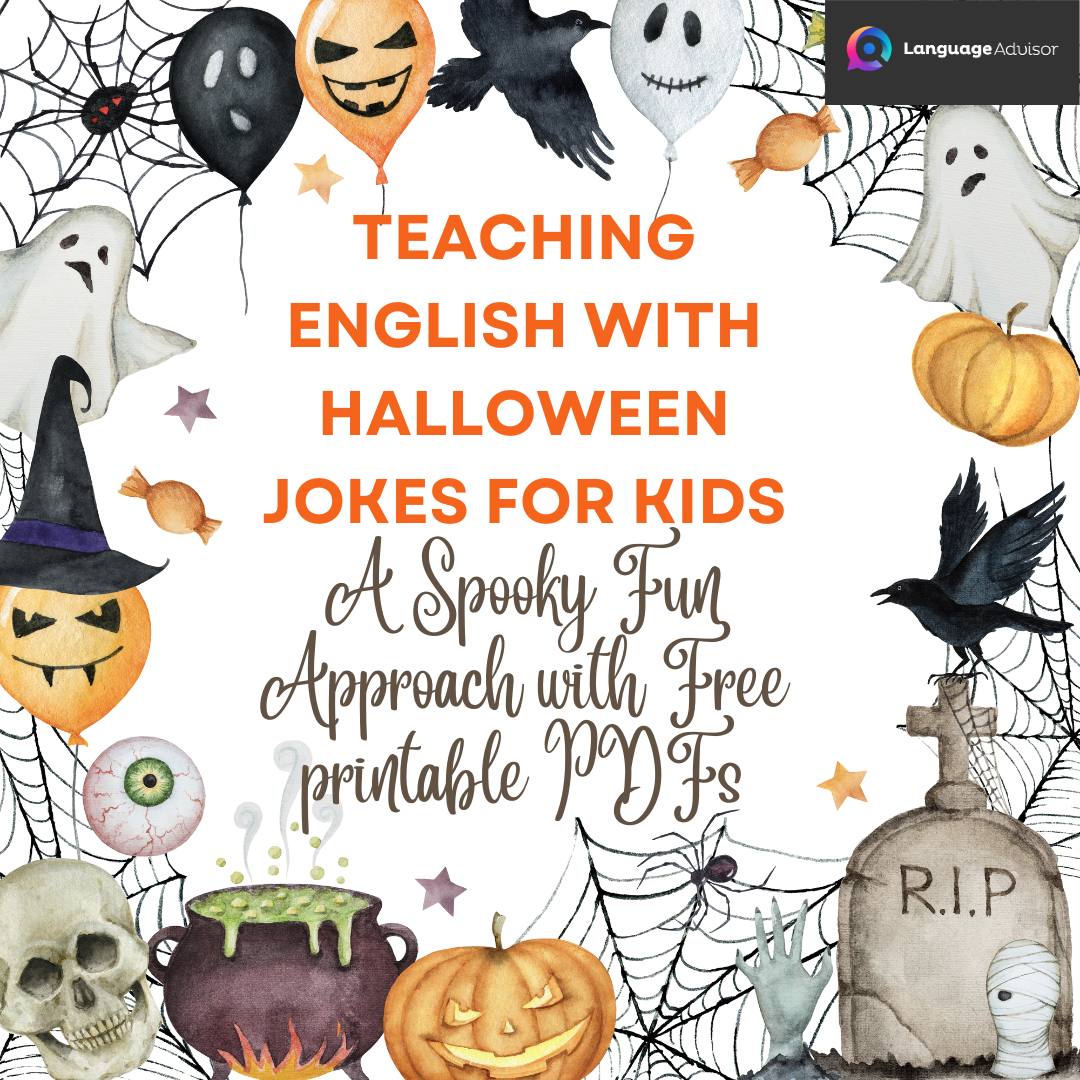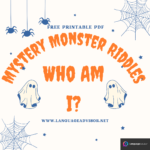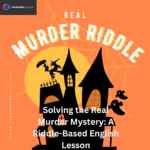Teaching English with Halloween Jokes for Kids: A Spooky Fun Approach with Free printable PDFs
Teaching English with Halloween Jokes for Kids: A Spooky Fun Approach

Halloween is the perfect time to infuse a bit of magic and mischief into your English lessons. Kids love a good joke, and incorporating Halloween-themed humor into your lessons can make learning fun and engaging. Here’s how you can use Halloween jokes to teach English to kids and keep them excited about learning!
Why Use Halloween Jokes in Your Lessons?
- Engagement: Kids are naturally drawn to humor. Halloween jokes, with their playful themes and spooky fun, grab their attention and make learning more enjoyable.
- Language Skills: Jokes are a great way to teach language skills, including vocabulary, grammar, and comprehension. Kids will not only learn new words but also practice sentence structure and improve their understanding of language nuances.
- Cultural Awareness: Halloween is a widely recognized holiday with its own set of traditions and vocabulary. By discussing Halloween jokes, kids learn about cultural elements and expressions used during the season.
- Creativity: Jokes encourage creative thinking and problem-solving. When kids come up with their own Halloween jokes, they practice crafting sentences and using their imagination.
How to Incorporate Halloween Jokes into Your Lessons
- Joke of the Day: Start each lesson with a Halloween joke. For example, you might say, “Why don’t ghosts like the rain? Because it dampens their spirits!” Use the joke as a fun way to introduce new vocabulary or grammar points.
- Joke Analysis: Break down the jokes to teach vocabulary and grammar. Discuss why certain words are used, how the joke plays with language, and what makes it funny. This can help kids understand wordplay and idiomatic expressions.
- Joke Creation: Encourage kids to create their own Halloween jokes. This activity helps with sentence construction, creativity, and understanding of humor. Provide a template like, “Why did the [spooky creature] go to [place]? Because [punchline].”
- Joke Reading and Comprehension: Have kids read Halloween jokes aloud to practice pronunciation and fluency. Follow up with comprehension questions like, “What is the joke about?” and “What makes this joke funny?”
- Joke Flashcards: Create flashcards with Halloween jokes and their punchlines. Use these for matching games or to practice reading skills. For example, one card might have “What’s a ghost’s favorite dessert?” and another card with “I scream!”
- Joke-Themed Crafts: Combine jokes with Halloween-themed crafts. Kids can make “joke books” or “spooky joke posters” where they write and decorate their favorite Halloween jokes.
- Classroom Fun: Use Halloween jokes to create a festive atmosphere. Decorate your classroom with Halloween-themed posters featuring jokes, or host a joke-telling contest where kids can perform their best Halloween jokes.
Example Jokes for Your Classroom
Here are a few Halloween jokes to get you started:
- Why did the vampire get a job at the blood bank?
He wanted to work the graveyard shift! - What’s a ghost’s favorite dessert?
I scream! - Why did the skeleton go to the party alone?
He had no body to go with him! - What do you get when you cross a vampire and a snowman?
Frostbite! - Why was the jack-o’-lantern so good at math?
It had plenty of pumpkin pi!
Wrapping Up
Using Halloween jokes in your English lessons is a fantastic way to make learning fun and memorable. Not only will your students improve their language skills, but they’ll also enjoy the seasonal humor and engage more deeply with the material. So this Halloween, embrace the spooky spirit and let the jokes roll in!
Happy teaching, and have a fang-tastic Halloween! 🎃👻

Teaching English with Halloween Jokes for Kids
DOWNLOAD THE PDF FOR FREE






